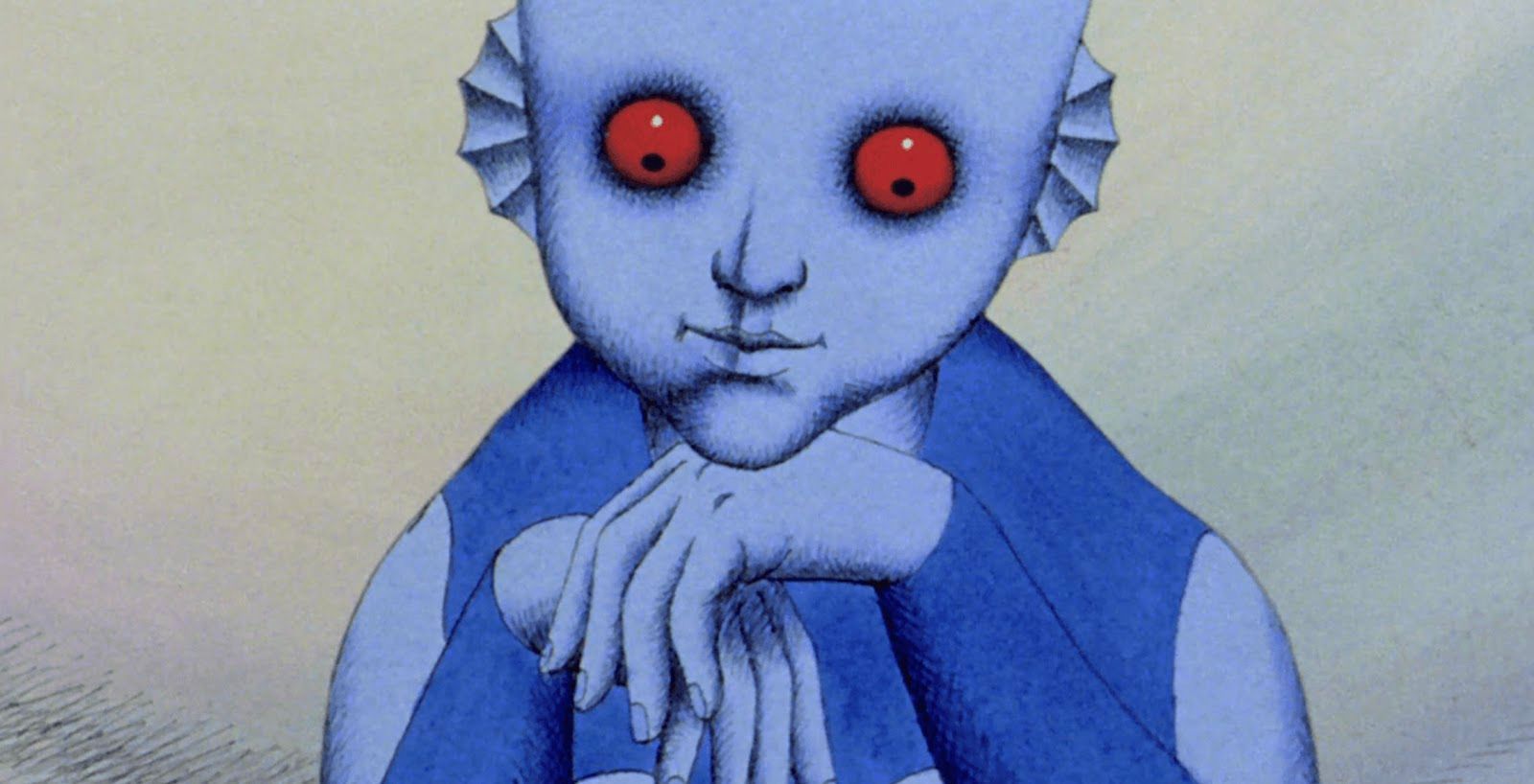
#OneCoolThing: Angus Dick
Welcome to the third post in a regular series where we're going to be inviting members of our team to talk about One Cool Thing (not necessarily from games) and if/how it influences/reflects on their work. While we're not able to talk about the exciting things we're working on right now, we hope this will be a nice little series of introductions to the interests & practices of our excellent new team. Here we have an entry from the brilliant Angus Dick. You can also check out Ben Wilson on Leaderboards, and Char Putney on Randomness.
Whenever someone asks me what my favourite animated film is, I always immediately say FANTASTIC PLANET. I have no idea where my Criterion Collection blu-ray of it is, so this blog post is definitely not an attempt to reach whoever I lent it to in an effort to get it back!
I could talk your ear off about Fantastic Planet, so I’m going to split my One Cool Thing into 3 Smaller Cool Things that I love about it:
It’s a French-Czechian coproduction.
French Director Rene Laloux directed it, adapting science-fiction author Stefan Wul’s 1957 book Oms en série. Surrealist Roland Topor created the character designs and they partnered with parisian arthouse company Argos Films. However, Argos had little experience with feature film animation, so they collaborated with Jiří Trnka Studio, an amazing Czechian studio (more on them later) to be able to actually get the thing made.
The production faced difficulties, not least by the invasion of the Soviet Union in 1968, but despite this it was completed and premiered at the Cannes Film Festival in May 1973, winning a Special Jury Prize.
Fantastic Planet is unique because it feels both very French and very Czechian. A perfect collaboration.
The art and animation is unique, but also economical.
Although the project received funding from France and from then-Czechoslovakia’s Ministry of Culture (yay to funding the arts!), it had a very limited budget in comparison to, say, a Disney feature. This is where the Czechian school of animation (not sure if that's an official term, but let's go with it) comes into play! The masterful animators used stop motion puppet animation to bring Topor’s designs to life. This animation technique involves splitting a drawing into separate parts and laying them on top of each other in progressive poses, switching out hand and face shapes when necessary. This means that the animators don’t have to redraw every frame of animation (as was done in Disney’s Robin Hood, which also released in 1973).
This form of animation has been practised for a century by Czechian animators, and in Fantastic Planet, it is so well executed that it is almost impossible to see where the individual parts of the puppets join up. The result is that the animation style preserves Topor’s amazing illustrative style, with the wonderful detail visible in every frame of the film.
The music is amazing!
As much as I love the rousing waltz in Howl’s Moving Castle or the Phil Collins belters in Disney’s Tarzan, Alain Goraguer’s score for Fantastic Planet is my all-time favourite soundtrack. Harnessing wah-wah guitars, lounge jazz and ghostly vocals, Goraguer knits the story and visuals together into a complete otherworldly package. I will often put Générique (I) on while I work.
In conclusion, I chose Fantastic Planet as my One Cool Thing because I see much of what makes it a masterpiece in Mutazione and the Next Thing that we are currently working on at Die Gute Fabrik. The collaborative process, the marriage of good art with economic animation technique and the use of excellent music fuel and inspire my own creative endeavours...
Watch Fantastic Planet!
